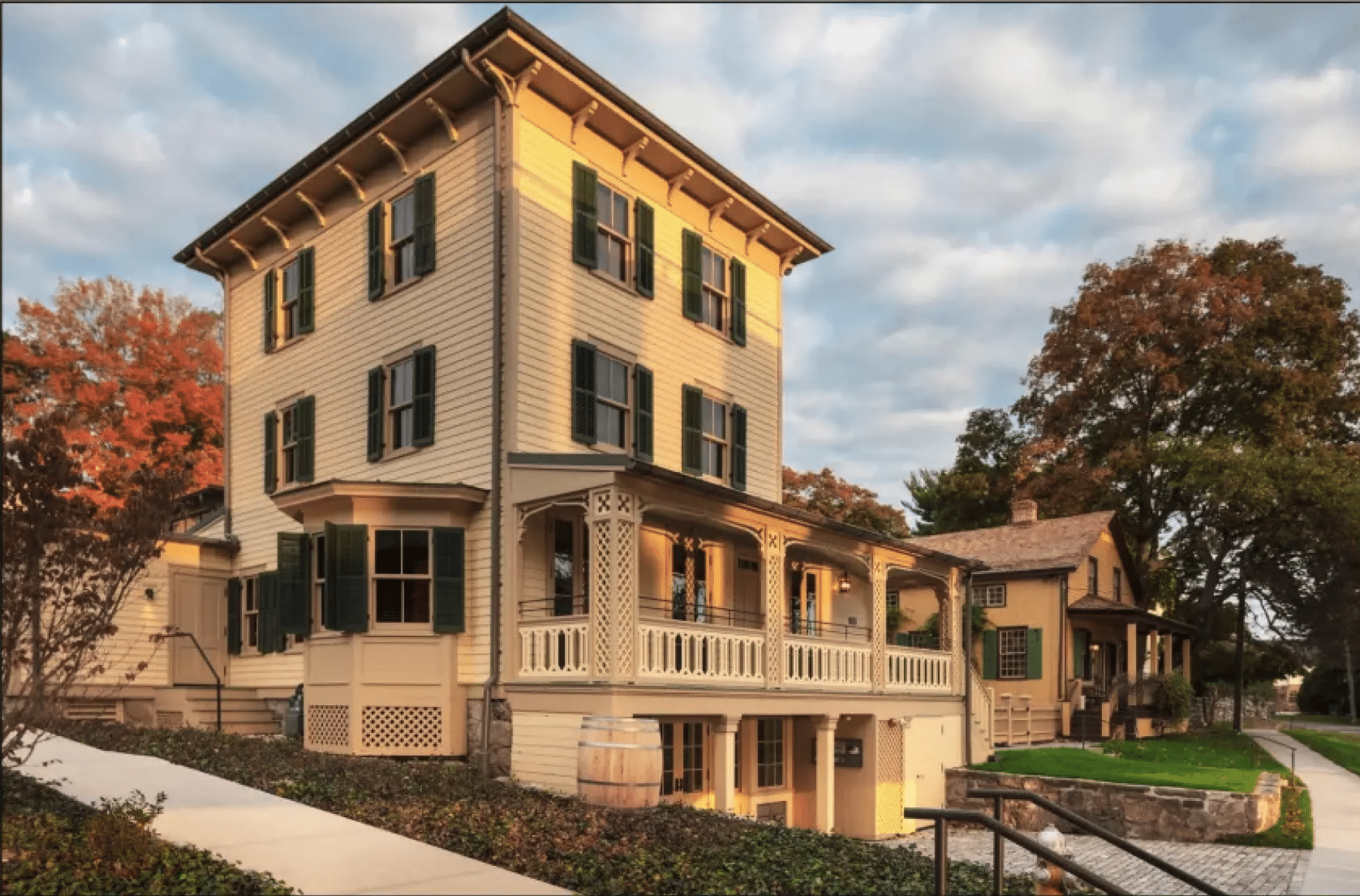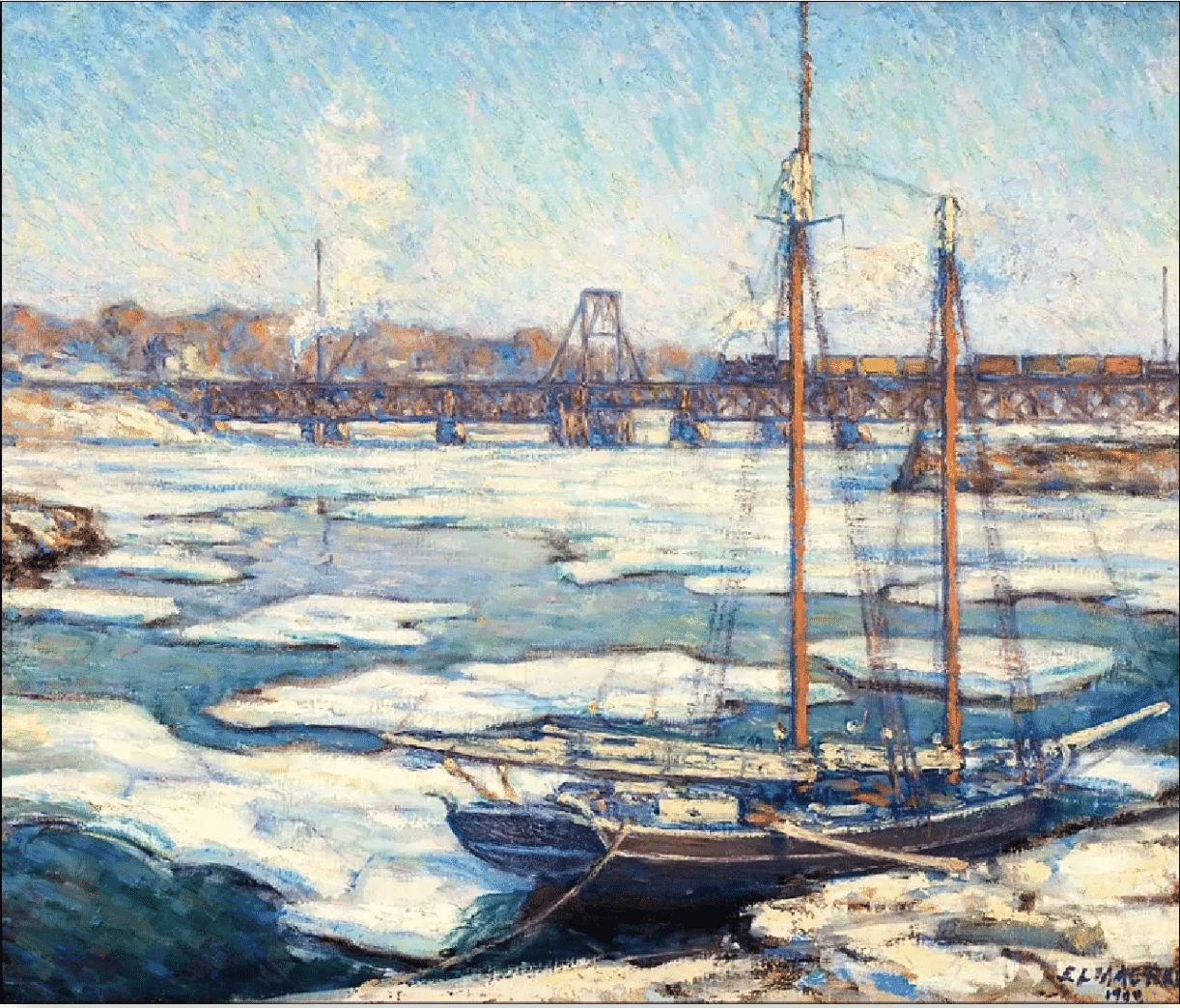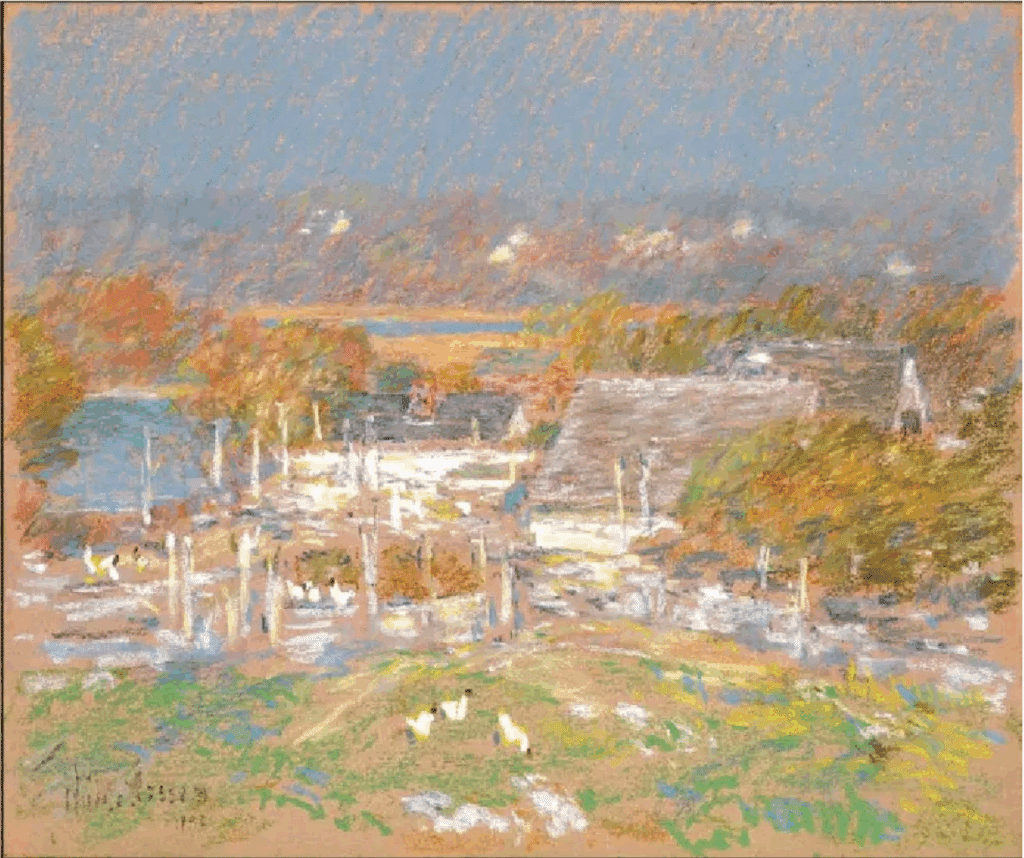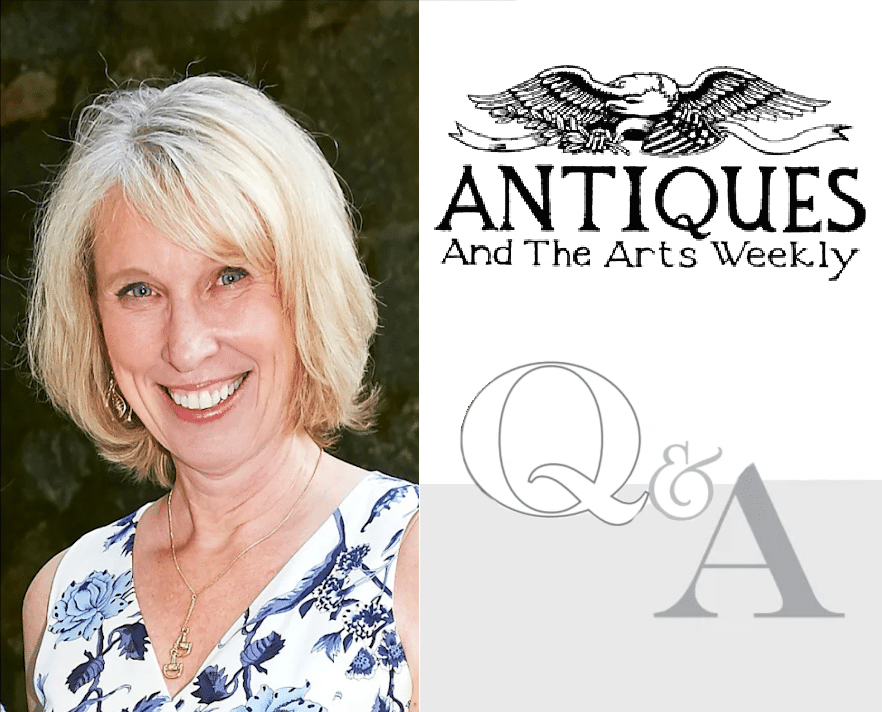After 29 years as Greenwich Historical Society’s executive director and CEO, Debra Mecky, PhD, announced her retirement this past April. Mecky’s accomplishments during her tenure are seemingly boundless, so Antiques and The Arts Weekly took some time to dive into some of her personal career highlights, as well as what she’s looking forward to during this new, upcoming chapter in her life.
What was the Greenwich Historical Society like when you arrived, and what does it look like now, as you are preparing to leave?

Greenwich Historical Society had no director for two years prior to my arrival in April 1996, so there were a lot of things to address immediately. My first big project was to oversee the restoration of the Justus Luke Bush Storehouse (circa 1805, acquired in 1989) and adapt it as the site’s first visitor center and exhibition gallery. We commissioned an historic landscape plan and created a new parking lot under the I-95 overpass. Following the opening of the Storehouse, I initiated the project to reinterpret Bush-Holley House to better portray its role as home to Connecticut’s first art colony, while continuing to support its use for school programs serving every student in town.
As a note, Bush-Holley House is a circa 1730 Georgian mansion overlooking the Cos Cob harbor where the David Bush family — descendants of Justus Bosch of New Amsterdam — carried out its maritime business for a century. Around the time the railroad came to Greenwich in 1847, the house passed out of the family and was acquired between 1882-84 by Josephine and Edward Holley, whose descendants owned it until its acquisition by Greenwich Historical Society in 1957.
Could you share a few instances (exhibitions or acquisitions) that you considered pivotal moments of your tenure?
As highlights of my tenure, I am proud that we were able to acquire the former Toby’s Tavern (circa 1805, 1855) and add 72 artworks by Cos Cob art colony artists to the collections, many of which are on display in Bush-Holley House, and others that are showcased in the Permanent Collections and Special Exhibitions Galleries.
When Bush-Holley House was first acquired by Greenwich Historical Society, there was very little awareness of its national significance apart from it being an important early local landmark of Colonial and Revolutionary War history. That changed due to the work of American art historians, including Greenwich resident Susan G. Larkin, whose book, The Cob Cob Art Colony: Impressionists on the Connecticut Shore, was published by Yale University Press in 2001.

Important artworks added during my tenure included our first painting by John Henry Twacthman of his house on Round Hill Road in Greenwich and etchings, pastels and paintings of the Holley House and Cos Cob by Childe Hassam. We added the Historical Society’s first work of art by Theodore Robinson, and our first work of art by a female member of the art colony, Maltide Browne. We purchased beautiful oil paintings and wooden sculptures by Elmer MacRae, who married into the Holley family, and whose masterpieces, “Schooner in the Ice” and “October” are on display in the house museum. We also acquired illustrations by Genjiro Yeto, a Japanese artist and friend of the MacRaes who frequented the Holley House.
In addition to artwork, the archival collections also expanded significantly during the past three decades and are now rehoused in a state-of-the art research library and collections vault built as part of the “Reimagine the Campus” transformation in 2016-2018. The Institute of Museum and Library Services (IMLS) provided grants to move the collections, catalog and digitize them for greater access. Significant acquisitions included material related to WWI Colonel Raynal C. Bolling, the Daniel Merritt Mead Civil War journal, numerous collections relating to Mead, Reynolds, Brush and other old Greenwich families, the Thomas N. Cooke business records and a century of records kept by the League of Women Voters of Greenwich.
A memorable acquisition was a slave memoir by Wallace Turnage that had been hidden by his daughter for many years, while she passed as white in Greenwich. The memoir gave her father’s handwritten account of his flight to freedom, escaping from the Alabama plantation where he worked as field hand. Having invited David W. Blight of Yale University’s Gilder Lehrman Center for the Study of Slavery to speak at the Historical Society’s annual meeting, I took advantage of the opportunity to ask his advice regarding its authenticity and transcription. His resulting book, A Slave No More: Two Men Who Escaped to Freedom, Including Their Own Narratives of Emancipation (2007), ensured that Wallace’s story, hidden for so many years and almost lost, saw the light.
I understand that you oversaw the restoration of the Justus Luke Bush Storehouse and Toby’s Tavern. What is it like to oversee a historical restoration, and what was your role in the process?
The first and most important step in any restoration is finding the right professional team of historians and architects to complete an Historic Structures Report to document the existing conditions and to make recommendations to guide its restoration and use. Together with the BushHolley House, the storehouse and tavern are the only surviving buildings on the former Cos Cob Landing. They are witnesses to the multi-cultural history of the village of Cos Cob and its early maritime commerce in the Eighteenth and Nineteenth Centuries.
You implemented a bi-annual exhibition program during your tenure; do you have a favorite exhibition or two that stand out in your mind? Why were they so meaningful?
Special exhibitions have provided wonderful opportunities to showcase Greenwich’s history. Some of my favorites include those that embraced underrepresented residents and immigrant families. We did the first exhibition on “African Americans of Greenwich” and later purchased our first artwork by an African American from Greenwich, Hester Mead, who had been enslaved by the Bush Family. We celebrated Italian history and culture through an exhibition, “Italy to America.” Another highlight was working with Susan G. Larkin and guest curators on a series of art exhibitions on individual artists of the Cos Cob art colony, including Childe Hassam, Henry Fitch Taylor and illustrators like Genjiro Yeto.
Funding museum-school partnerships through the Historical Society’s endowment was a major part of your tenure. In your opinion, why is it so important that we utilize spaces like museums as tools for education, and why did it become a point of interest for you?

Each year, thousands of students, primarily in grades 1-7, participate in the Historical Society’s interactive, inquiry-based programs that help sharpen their critical thinking skills and develop a sense of civic engagement. Our recent assured experience for fifth graders, Rebels and Royalists, teaches the complex life during the American Revolution affecting the Bush household and Connecticut. I’m very proud of our museum-school partnership with two of Greenwich’s Title I schools. Focused primarily on social studies and fine art, the Historical Society’s rich programming is designed to complement the Title I school’s mission of narrowing the achievement gap that runs along racial, ethnic and socioeconomic lines. And it is often the first museum experience for these students and their families. You would be hard pressed to find anyone in Greenwich under the age of 30 who has not experienced the Historical Society’s classroom enrichment.
Is there anything that you didn’t get to do that you would have liked to?
The Board has initiated a capital campaign to double the endowment, which I have worked on but will not complete. Called “Past, Present Future: Our Town, Our Story,” it will ensure the future sustainability of the Greenwich Historical Society to live into its vision to collect and interpret a fuller history of the town to a broader audience. It will be an important part of my successor’s role.
Now, the important question! What does retirement look like for you?
For me, retirement is a time to step back and reassess my future. I am looking forward to reconnecting with family and friends who are spread out over seven states from Massachusetts to Florida to Washington State. I hope to hike and bike in many beautiful national parks and to tour historic places throughout the country.


